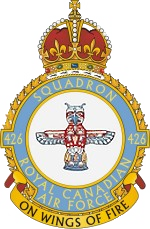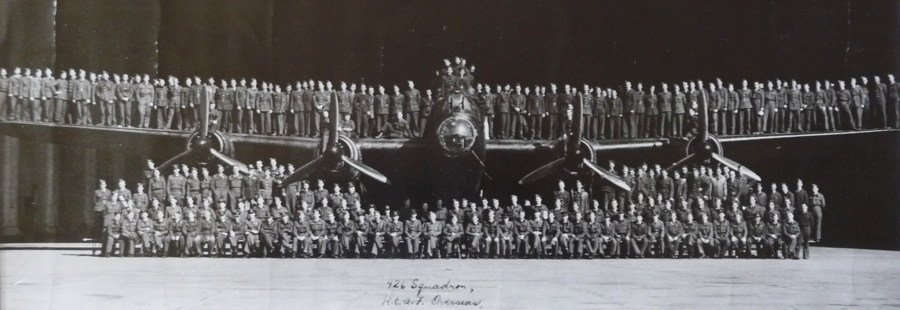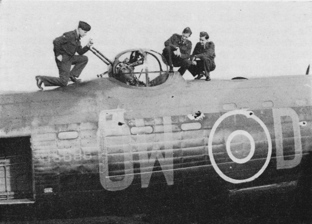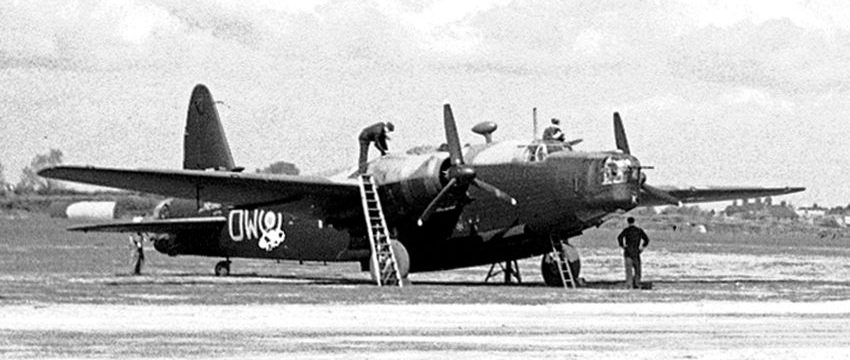 Bomber Command
Bomber Command  |
Aircrew Chronicles
|
Aircrew Losses
|
Nose Art
|
BCATP
|
Lancaster
|
Media
|
Aircrew Chronicles
|
Aircrew Losses
|
Nose Art
|
BCATP
|
Lancaster
|
Media
 Bomber Command
Bomber Command  |
Aircrew Chronicles
|
Aircrew Losses
|
Nose Art
|
BCATP
|
Lancaster
|
Media
|
Aircrew Chronicles
|
Aircrew Losses
|
Nose Art
|
BCATP
|
Lancaster
|
Media
No. 6 Group and the Canadian Squadrons
Bomber Command


|
|
426 Squadron was established at Dishforth on 15th October, 1942, as part of No. 4 Group. At the beginning of January, 1943, the unit was transferred to No. 6 (R.C.A.F.) Group. While the squadron was stationed at Dishforth, the Wellington was the aircraft used to deliver bombs and mines to the enemy. The group transferred to Linton-on-Ouse in June, 1943, switching to Lancaster bombers at the same time. Later in April of 1944 the squadron began to convert to Halifax bombers.
The mythical thunderbird featured in the squadron crest originates from North American natives. According to the myth, the thunderbird signifies disaster and death to anyone on the ground who perceives it. Below, the motto reads "On wings of fire." Fuselage markings with "OW" indicated the aircraft belonged to the squadron. During World War II operations, 426 Squadron lost 426 aircrew.
Halifax LW682 from 426 Squadron crashed in a German bog during operations. Due to the muddy terrain, recovery was near impossible and the remains of only five aircrew were removed at the time. The remains of the plane sank within 24 hours of impact. 53 years later in 1997, a Canadian-led recovery team excavated the plane along with the three bodies still inside, one of them the Canadian pilot. Parts from this aircraft were used in the restoration of Halifax NA337 now on display at Trenton, Ontario, while the aluminum was melted down into ingots. Some of this was supplied by the Bomber Command Museum of Canada and integrated into the ceiling of the Bomber Command Memorial in England.



